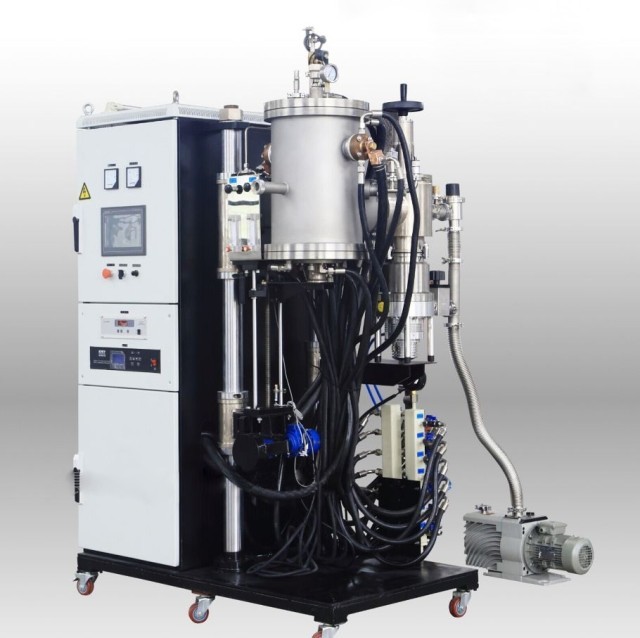
Vacuum Furnace
Small Vacuum Heat Treat and Tungsten Wire Sintering Furnace
Item Number : KT-VTW
Price varies based on specs and customizations
- Vacuum degree
- 1.3*10^-1 Pascal
- Heating element
- Tungsten wire
- Applications
- Hard alloy sintering, Ceramic materials processing, Carbon fiber graphitization, Carbon and carbon composite sintering, Silicon carbide products sintering, Photoelectric coating materials processing, Refractory metals and alloy sintering
Shipping:
Contact us to get shipping details Enjoy On-time Dispatch Guarantee.
Why Choose Us
Reliable PartnerEasy ordering process, quality products, and dedicated support for your business success.
Small Vacuum Tungsten Wire Sintering Furnace
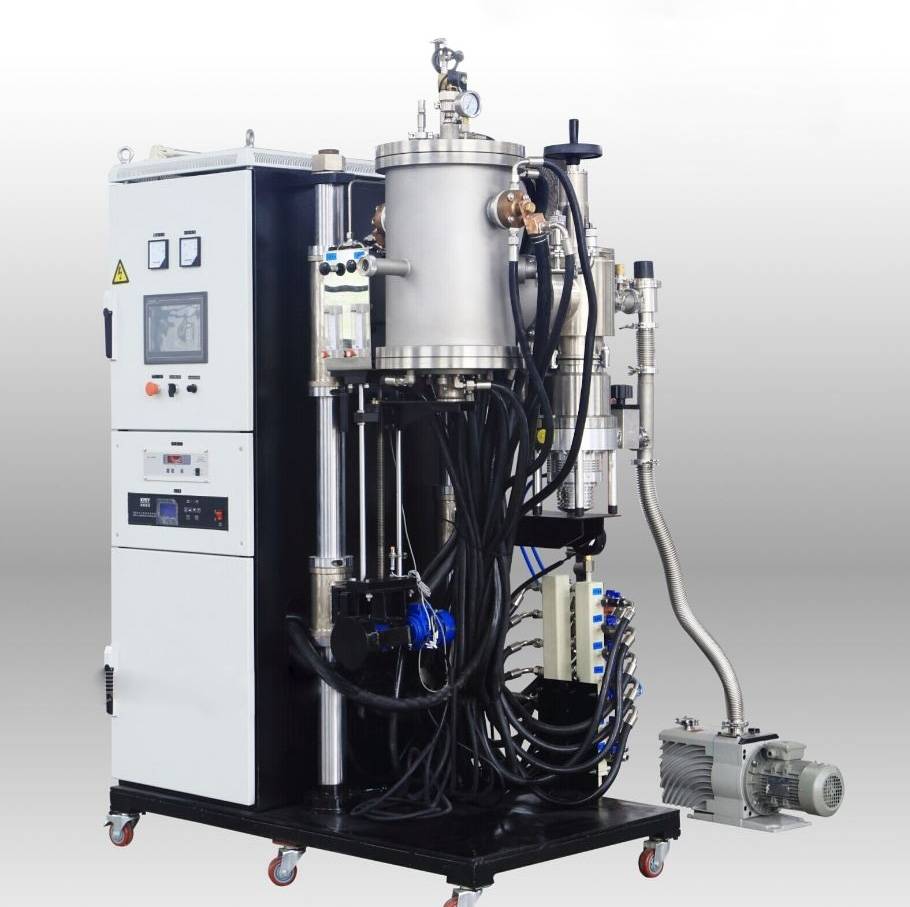
Overview: Designed for Advanced Material Research
The Small Vacuum Tungsten Wire Sintering Furnace is a compact, experimental vacuum furnace meticulously engineered for universities and research institutes. It delivers the precision, reliability, and ease of use crucial for advanced material processing and experimental work.
Key Benefits for Your Laboratory:
- Space-Saving & Mobile Design: Its vertical, integrated cabinet with moving wheels is perfect for labs with limited space. Quick-connect electrical connections further facilitate easy relocation and setup.
- Superior Vacuum Integrity: Achieve outstanding experimental conditions. The CNC-welded shell, robust vacuum pipeline, and precision-polished inner surfaces (smooth finish better than Δ6) are verified by a helium mass spectrometer leak detector. This ensures a high vacuum degree (up to 1.3*10-1 Pascal, equivalent to 99.99987% argon purity) to minimize atmospheric contamination.
- User-Friendly & Safe Operation: Streamline your experiments with an intuitive interface and fully automatic control for vacuum pumping, pressure increasing, and sintering. Comprehensive safety features, including a standard-made electric control cabinet, interlocking functions, over-temperature protection, automatic shut-off, and classified sound/light alarms, ensure secure and convenient operation.
- Reliable & Efficient Performance: The electrically lifted furnace bottom ensures smooth, dependable operation while contributing to energy efficiency by reducing water consumption. High-quality electrical components (e.g., from Omron or Schneider) guarantee stable control and consistent results.
Versatile Applications
This furnace is highly versatile, supporting a wide array of high-temperature processes including:
- Hard alloy sintering: Enhancing their strength and durability.
- Ceramic materials processing: Ensuring their structural integrity and electrical properties.
- Carbon fiber graphitization: Improving their conductivity and thermal stability.
- Carbon and carbon composite sintering: Resulting in enhanced mechanical properties.
- Silicon carbide products sintering: Valuable for products known for high hardness and wear resistance.
- Photoelectric coating materials processing: Optimizing their optical and electrical performance.
- Refractory metals and alloy sintering: Suitable for sintering materials like tungsten, molybdenum, tungsten-copper alloy, and other alloys in a vacuum or atmosphere at high temperatures.
Key Technical Advantages
- High-Performance Processing: Delivers high-temperature capabilities with precise temperature control, ensuring consistent and reliable sintering, annealing, and brazing results.
- Robust and Durable: Built with durable construction to withstand demanding laboratory environments, ensuring long-lasting performance and return on investment.
- Advanced Material Compatibility: Expertly designed for fast and high-end sintering of a diverse range of materials, including metals, ceramics, nanomaterials, non-crystalline materials, composite materials, and functionally graded materials.
- Simplified Maintenance & Troubleshooting: High-quality electrical components ensure stable control, while a classified sound and light alarm function simplifies troubleshooting, maximizing uptime.
Working Principle
The small vacuum tungsten wire sintering furnace is a resistance sintering furnace that utilizes tungsten wire as the heating element. The furnace body is made of high-temperature resistant materials and has a vacuum-tight structure. The working principle is to place the material to be sintered in the furnace chamber, evacuate the air inside the chamber to create a vacuum environment, and then pass a current through the tungsten wire to generate heat. The high temperature generated by the tungsten wire causes the material to undergo a series of physical and chemical changes, such as diffusion, thermal cracking, and chemical reactions, which promote the reorganization and recrystallization of the material at the microscopic level. This process results in the formation of a dense structure and excellent performance while preventing oxidation and pollution of the material.
Your Partner in Advanced Material Research
Leveraging exceptional R&D and in-house manufacturing, KINTEK provides diverse laboratories with advanced high-temperature furnace solutions. Our product line, including Muffle, Tube, Rotary Furnaces, Vacuum & Atmosphere Furnaces, and CVD/PECVD/MPCVD Systems, is complemented by our strong deep customization capability to precisely meet unique experimental requirements.
Ready to elevate your research with the Small Vacuum Tungsten Wire Sintering Furnace, or need a custom solution? Our experts are eager to assist. Contact us today to discuss your specific needs, request a quote, or explore our customization options.
FAQ
What Are The Main Applications Of A Vacuum Furnace?
What Is An Atmosphere Furnace Used For?
What Is A Dental Furnace Used For?
What Is A Vacuum Induction Furnace?
What Are The Main Applications Of A Horizontal Vacuum Furnace?
What Are The Key Features Of A Vacuum Furnace?
What Are The Key Features Of An Atmosphere Furnace?
What Are The Key Features Of A Dental Furnace?
What Are The Main Applications Of Vacuum Induction Furnaces?
What Are The Key Features Of A Horizontal Vacuum Furnace?
How Does A Vacuum Furnace Work?
How Does An Atmosphere Furnace Work?
How Does A Dental Furnace Work?
How Does A Vacuum Induction Furnace Work?
How Does A Horizontal Vacuum Furnace Work?
What Are The Advantages Of Using A Vacuum Furnace?
What Are The Advantages Of Using An Atmosphere Furnace?
What Are The Advantages Of Using A Dental Furnace?
What Are The Advantages Of Using A Vacuum Induction Furnace?
What Are The Advantages Of Using A Horizontal Vacuum Furnace?
What Types Of Materials Can Be Processed In A Vacuum Furnace?
What Types Of Gases Can Be Used In An Atmosphere Furnace?
What Safety Features Should A Dental Furnace Have?
What Types Of Vacuum Induction Furnaces Are Available?
What Types Of Materials Can Be Processed In A Horizontal Vacuum Furnace?
What Is The Difference Between Hot Wall And Cold Wall Vacuum Furnaces?
What Safety Features Are Available In Advanced Atmosphere Furnaces?
What Types Of Dental Furnaces Are Available?
Why Is Temperature Control Important In Vacuum Induction Furnaces?
What Is The Temperature Range Of A Horizontal Vacuum Furnace?
Can Vacuum Furnaces Be Customized For Specific Applications?
What Materials Can Be Processed In A Vacuum Induction Furnace?
How Does The Vacuum Environment Benefit Material Processing?
4.8
out of
5
This furnace is a game-changer! Super efficient and delivers consistent results every time. Worth every penny!
4.7
out of
5
Fast delivery and top-notch quality. The precision of this furnace is unmatched. Highly recommend!
4.9
out of
5
Incredible value for money. The build is robust, and the technology is cutting-edge. Love it!
4.8
out of
5
Durable and reliable. Perfect for our lab needs. The vacuum heat treat feature is flawless.
4.9
out of
5
Impressed by the speed and accuracy. This furnace has significantly boosted our productivity.
4.7
out of
5
Great investment! The tungsten wire sintering works like a charm. Very satisfied with the purchase.
4.9
out of
5
Exceptional performance and sleek design. It’s a powerhouse in a compact size. Love it!
4.8
out of
5
Outstanding quality and fast shipping. This furnace exceeds all expectations. A must-have!
4.7
out of
5
The perfect blend of technology and durability. It’s a workhorse that never disappoints.
4.9
out of
5
Absolutely brilliant! The heat treat process is so precise. Couldn’t be happier with this purchase.
4.8
out of
5
Superb craftsmanship and advanced features. This furnace is a dream to work with. Highly recommend!
4.9
out of
5
Fantastic product! The speed and efficiency are unmatched. A true gem for any lab or workshop.
REQUEST A QUOTE
Our professional team will reply to you within one business day. Please feel free to contact us!
Related Products

Molybdenum Vacuum Heat Treat Furnace
High-performance molybdenum vacuum furnace for precise 1400°C heat treatment. Ideal for sintering, brazing, and crystal growth. Durable, efficient, and customizable.

600T Vacuum Induction Hot Press Vacuum Heat Treat and Sintering Furnace
600T Vacuum Induction Hot Press Furnace for precise sintering. Advanced 600T pressure, 2200°C heating, vacuum/atmosphere control. Ideal for research & production.
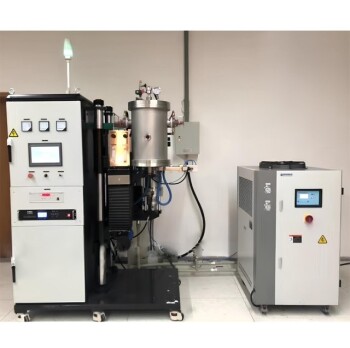
Vacuum Heat Treat Sintering Furnace Molybdenum Wire Vacuum Sintering Furnace
KINTEK's Vacuum Molybdenum Wire Sintering Furnace excels in high-temperature, high-vacuum processes for sintering, annealing, and material research. Achieve precise 1700°C heating with uniform results. Custom solutions available.

9MPa Air Pressure Vacuum Heat Treat and Sintering Furnace
Achieve superior ceramic densification with KINTEK's advanced air pressure sintering furnace. High-pressure up to 9MPa, precise 2200℃ control.

Vacuum Heat Treat Sintering and Brazing Furnace
KINTEK Vacuum Brazing Furnaces deliver precision, clean joints with superior temperature control. Customizable for diverse metals, ideal for aerospace, medical, and thermal applications. Get a quote!

Vacuum Heat Treat Furnace with Ceramic Fiber Liner
KINTEK's Vacuum Furnace with Ceramic Fiber Lining offers precise high-temperature processing up to 1700°C, ensuring uniform heat distribution and energy efficiency. Ideal for labs and production.

Vacuum Hot Press Furnace Machine Heated Vacuum Press Tube Furnace
Discover KINTEK's advanced Vacuum Tube Hot Press Furnace for precise high-temperature sintering, hot pressing, and material bonding. Customizable solutions for labs.

Vacuum Induction Melting Furnace and Arc Melting Furnace
Explore KINTEK's Vacuum Induction Melting Furnace for high-purity metal processing up to 2000℃. Customizable solutions for aerospace, alloys, and more. Contact us today!

Laboratory Quartz Tube Furnace RTP Heating Tubular Furnace
KINTEK's RTP Rapid Heating Tube Furnace delivers precise temperature control, rapid heating up to 100°C/sec, and versatile atmosphere options for advanced lab applications.

2200 ℃ Graphite Vacuum Heat Treat Furnace
2200℃ Graphite Vacuum Furnace for high-temperature sintering. Precise PID control, 6*10⁻³Pa vacuum, durable graphite heating. Ideal for research & production.
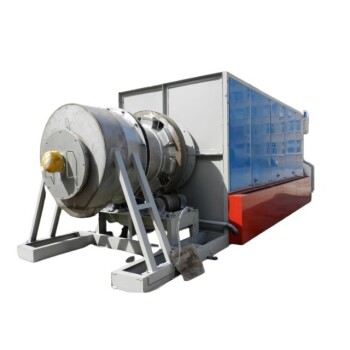
Electric Rotary Kiln Small Rotary Furnace for Activated Carbon Regeneration
Electric Activated Carbon Regeneration Furnace by KINTEK: High-efficiency, automated rotary kiln for sustainable carbon recovery. Minimize waste, maximize savings. Get a quote!

Vacuum Heat Treat Sintering Furnace with Pressure for Vacuum Sintering
KINTEK's Vacuum Pressure Sintering Furnace offers 2100℃ precision for ceramics, metals, and composites. Customizable, high-performance, and contamination-free. Get a quote now!

Laboratory Muffle Oven Furnace with Bottom Lifting
Boost lab efficiency with KT-BL Bottom Lifting Furnace: precise 1600℃ control, superior uniformity, and enhanced productivity for material science and R&D.

1800℃ High Temperature Muffle Oven Furnace for Laboratory
KINTEK Muffle Furnaces: Precision 1800°C heating for labs. Energy-efficient, customizable, with PID control. Ideal for sintering, annealing, and research.

1400℃ Muffle Oven Furnace for Laboratory
KT-14M Muffle Furnace: Precision 1400°C heating with SiC elements, PID control, and energy-efficient design. Ideal for labs.
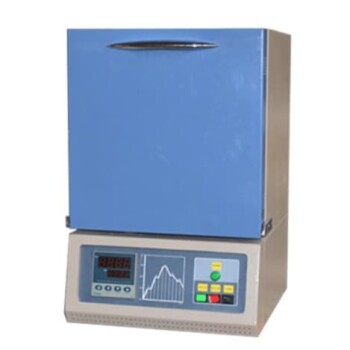
1200℃ Muffle Oven Furnace for Laboratory
KINTEK KT-12M Muffle Furnace: Precision 1200°C heating with PID control. Ideal for labs needing rapid, uniform heat. Explore models & customization options.

High Temperature Muffle Oven Furnace for Laboratory Debinding and Pre Sintering
KT-MD Debinding & Pre-Sintering Furnace for ceramics - precise temperature control, energy-efficient design, customizable sizes. Boost your lab efficiency today!

2200 ℃ Tungsten Vacuum Heat Treat and Sintering Furnace
2200°C Tungsten Vacuum Furnace for high-temperature materials processing. Precise control, superior vacuum, customizable solutions. Ideal for research & industrial applications.
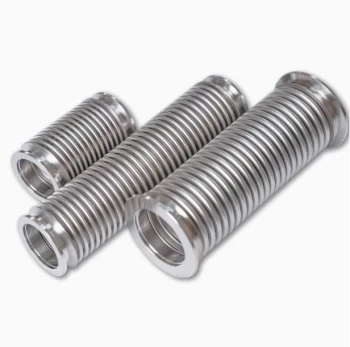
High Performance Vacuum Bellows for Efficient Connection and Stable Vacuum in Systems
KF ultra-high vacuum observation window with high borosilicate glass for clear viewing in demanding 10^-9 Torr environments. Durable 304 stainless steel flange.
Related Articles

Why Your High-Purity Metals Oxidize in a Perfect Vacuum—And How to Stop It
Frustrated by oxidized metals from your vacuum furnace? Discover the real culprit isn't the vacuum but the cooling phase, and how to fix it.

The Real Reason Your High-Performance Materials Are Failing (And It’s Not the Alloy)
Tired of inconsistent heat treatment? Discover the two invisible culprits sabotaging your materials and how a vacuum furnace provides the control to fix it for good.

Why Your Vacuum Furnace Failed After the Lab Move—And How to Prevent It
Discover why vacuum furnaces often fail after being moved and how robust engineering prevents costly damage to seals and components. Protect your investment.

Your Vacuum Furnace Is a System, Not a Component—Here’s Why That Changes Everything
Struggling with inconsistent high-temperature vacuum processes? Discover why a bigger pump isn't the answer and how an integrated system approach is key.

How to Select the Right Vacuum Hot Pressing Furnace Temperature for Your Materials
Learn how to choose the right vacuum hot pressing furnace temperature for materials like ceramics, metals, and alloys. Optimize sintering with expert tips.

How Vacuum Hot Press Furnaces Transform Advanced Material Engineering
Vacuum hot press furnaces enable precise material synthesis for aerospace, electronics, and energy sectors, enhancing density, strength, and reliability.

Your Lab Furnace Is Burning Money. Here's the Hidden Design Flaw (And How to Fix It).
Discover the hidden design flaw making your lab furnace inefficient and costly. Learn how a system-level approach to design can cut energy waste.

Beyond the Scrubber: Why Your Furnace Design is the Real Key to Environmental Compliance
Stop struggling with complex exhaust systems. Discover how the right furnace design inherently minimizes emissions and simplifies compliance.

The Invisible Saboteur: Why Your High-Temp Furnace Fails (And How to Stop It)
Frustrated by recurring furnace failures and short circuits? Discover the hidden cause—metallic vapor deposition—and learn how a furnace truly designed for your process can end the cycle for good.

Beyond the Checklist: Why Your High-Temperature Furnace Fails (And How to Ensure It Won't)
Frustrated by failed heat treatments despite following safety rules? Discover the hidden physical reasons for failure and how intelligently designed furnaces ensure process reliability.

The Hidden Cause of Uneven Heating in Your Furnace (And How to Fix It)
Struggling with inconsistent heating, warped samples, and failed furnace runs? Discover the hidden cause—and how a correctly engineered system can deliver reliable results.

Why Your Sintered Parts Fail: It’s Not Just About Heat, But Pressure and Purity
Struggling with porous, weak, or contaminated sintered materials? Discover why simply raising the temperature isn't the answer and how the interplay of heat, pressure, and vacuum is the key.